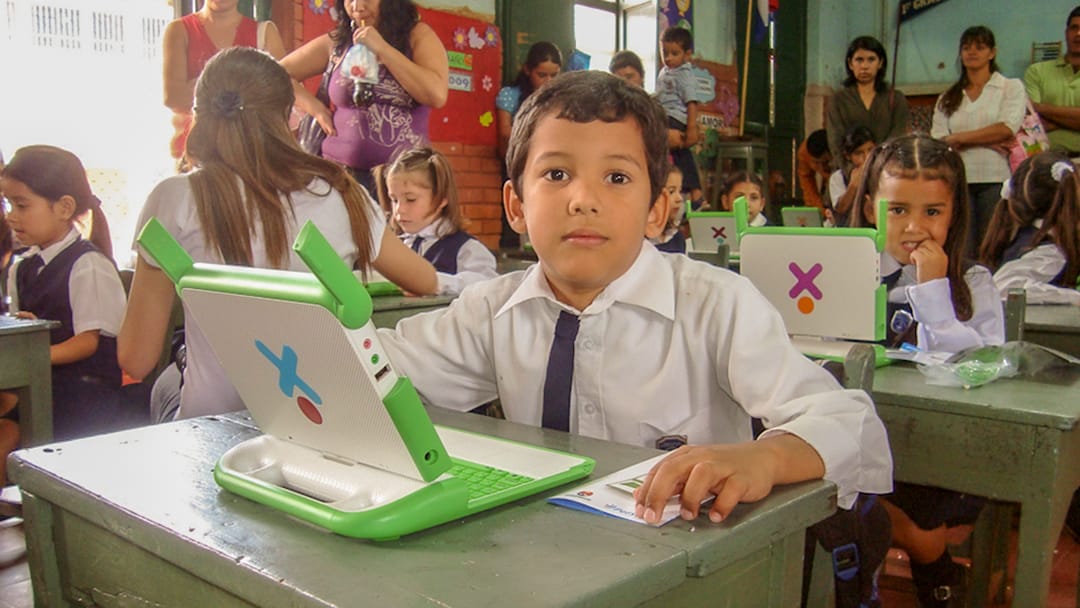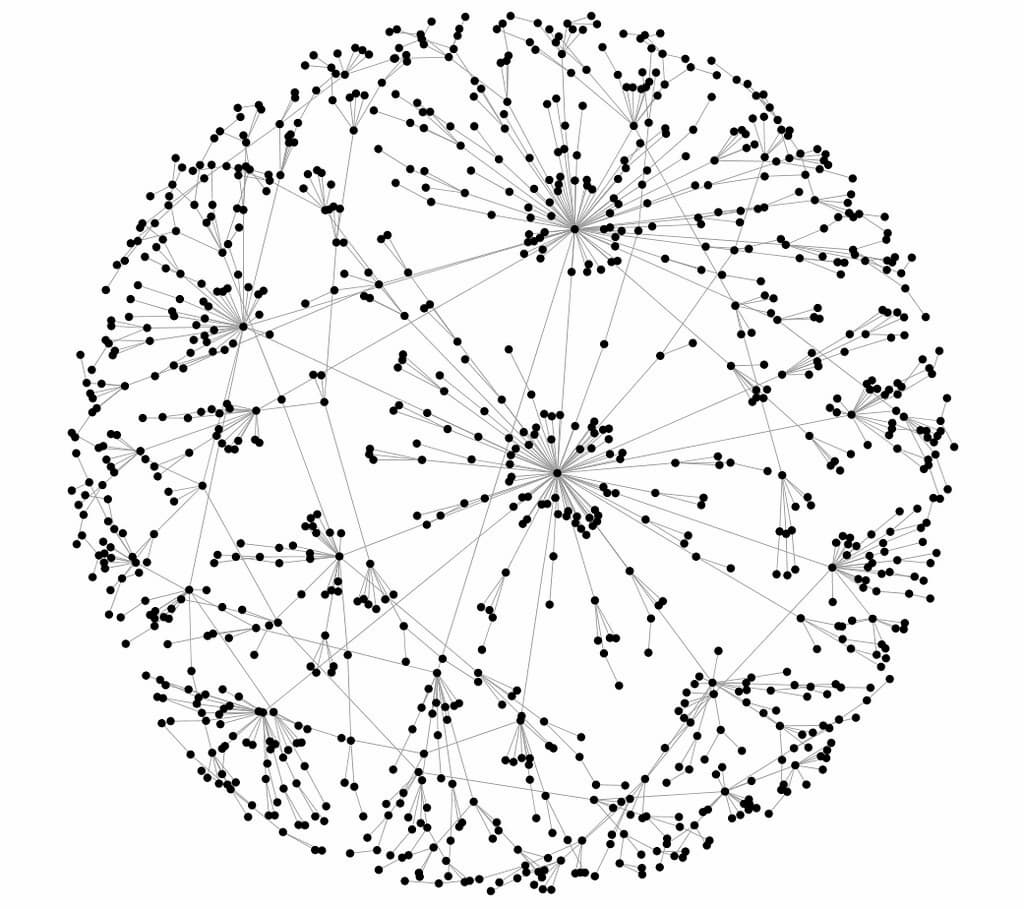Mission: Advancing Information Distribution Function of the Internet Contaminated with Disinformation
"Smart Nodes" are crucial for improving online information distribution, key to achieving Axion's goal of freeing humanity and optimizing happiness. This blog explores Smart Nodes' role in enhancing how we consume and interact with digital content.


While working as a newspaper reporter in Jakarta, Indonesia from 2010 to 2015, I witnessed a significant shift in information distribution, primarily due to the rapid proliferation of smartphones. This era marked the transition from the dominance of Blackberry to the widespread adoption of affordable, high-quality smartphones.
The vision that connectivity brought by these devices would strongly propel the growth of emerging and developing countries was becoming a reality. Nicholas Negroponte's initiative, "One Laptop per Child" aimed at enhancing digital access for children, was in some ways pre-empted by the ubiquitous presence of smartphones, supplied in large quantities by Chinese production hubs like Shenzhen.

This period also saw a revolutionary change in wireless network development. Telecom companies in emerging nations provided cheaper internet connections compared to their counterparts in developed countries. Notably, India's Reliance group made headlines for distributing connectivity at remarkably low costs. Global tech giants like Google and Facebook explored innovative methods to extend cheap internet access, while companies like SpaceX, OneWeb, and Amazon saw internet satellites as the ultimate solution.
Eric Schmidt and Jared Cohen's "The New Digital Age: Transforming Nations, Businesses, and Our Lives" encapsulated this era's ethos, suggesting that digital technology's spread into the poorest regions opened new economic opportunities, aiding in poverty alleviation. The book argued that the online "virtual world" and the "real world" were becoming increasingly intertwined, enhancing not just work efficiency but also health, education, and quality of life.
In the emerging mobile internet markets, new business models were rapidly evolving, outpacing those in richer countries. These models provided digital wallets to the unbanked and connected producers directly with consumers, bypassing exploitative middlemen. Even in Jakarta's low-income villages, I observed people using mobile phones to rapidly share vital information, trade goods and services through social and messaging apps, and access new business opportunities and everyday knowledge. Mobile phones also helped maintain social connections among residents, crucial in a city where origins and familial ties are of significant importance.
Side Effects of Mobile Internet
The "mobile revolution" I observed in Indonesia came with significant downsides, particularly in the spread of low-quality information. During the 2014 Indonesian presidential election, I encountered an overwhelming amount of fake news. Social media platforms were flooded with content slandering candidates based on false information, and text messages inciting religious and ethnic discrimination were rampant.
This disinformation was particularly dangerous given Indonesia's diverse mix of races and religions. Fluent in Indonesian and deeply integrated with the local community, I experienced this disturbing reality firsthand. It felt like a nightmare, seeing how easily public opinion could be swayed by mobile-propagated disinformation, a method seemingly more effective than the traditional controls used during the dictatorship era (1967-1998).
On one hand, mobile technology brought significant advancements to emerging economies, leading to the development of efficient, digital-native business models. However, the downside was the proliferation of low-quality information, which was especially perilous during elections. This became evident in the 2016 American presidential election and the Brexit referendum, where fake news likely influenced the outcomes.
The issue with disinformation is that it complicates decision-making. Human decisions are made based on incomplete information and in dynamic environments. Even in controlled games like shogi or go, where all information is visible, machine learning models struggle to always find the best move. In real-world scenarios, where information is often incomplete and biased, decision-making becomes even more complex.
Humans have cognitive biases that affect our decision-making. We tend to be more influenced by potential losses than gains, leading to loss aversion actions. Our intuition, influenced by emotions and unconscious biases, often leads us to seek evidence that confirms our existing beliefs. These biases can distort our risk assessment and decision-making processes.
In such a complex decision-making environment, if the initial information we receive is false or maliciously manipulated, making successful decisions becomes nearly impossible. The impact of mobile internet in circulating deviant information at high speed creates a highly risky situation, especially in contexts like elections where public emotions are heightened.
In certain circumstances, people's decisions are likely to be cracked through mobile.
Disinformation makes decision-making hard
Disinformation significantly complicates the decision-making process. Decision-making involves both inference and the actual decision. Typically, the information we base our decisions on is incomplete, and our environment constantly changes. The outcomes of our actions, their success or failure, are uncertain beforehand, and often, even retrospectively, the likelihood of different outcomes remains unclear.
This uncertainty is akin to strategy games like shogi or go, where, despite all information being visible, finding the best move in a vast search space is challenging for machine learning models. The complexity increases in games like poker or mahjong, where players must navigate incomplete information and constantly adapt their strategies amidst high uncertainty. Real-life decisions are even more complex, with numerous such situations arising frequently.
Humans are inherently subject to cognitive biases. We often fail to objectively evaluate future gains and losses, especially under risky conditions, tending to be more influenced by potential losses than gains, leading to actions aimed at loss avoidance. Our decision-making is governed by two systems: a fast, emotion-driven intuitive system and a slow, more deliberate, and energy-demanding reasoning system. Our instant judgments are heavily influenced by these unconscious biases and pre-existing beliefs, often leading us to seek confirmation for our initial beliefs.
Given these complexities, when the initial information we base our decisions on is incorrect or deliberately misleading, effective decision-making becomes almost impossible. Our tendency to apply biases, whether in risk assessment or in interpreting random events, further complicates this process. Therefore, in an environment rife with disinformation, making successful decisions becomes a daunting challenge.
How the Media Has Progressed
The evolution of media has significantly shaped how information is mediated and consumed. Initially, media consumption was dominated by mass media forms like television, radio, and newspapers. This format was highly effective for authorities to disseminate information to the masses. However, when used with ill intent or by those lacking the ability to produce quality information, mass media could become a dangerous tool, as evidenced by its role in driving wars and establishing dictatorships throughout history.
The advent of the commercial internet ushered in a new era of network-type media consumption. People gained the ability to create and distribute content independently, a shift further accelerated by the widespread use of mobile phones. This people-to-people media consumption was nothing short of revolutionary. Yet, it brought its own set of challenges. The information distribution network that emerged is highly susceptible to attackers intent on spreading fake news, a phenomenon now occurring globally.
A key example of this is the concept of a "scale-free network," a network structure in which some nodes are highly connected while most have only a few connections. In such networks, if a highly connected node is malicious or lacks the ability to analyze information accurately, misinformation can spread rapidly and widely. It's a potent theory that the simultaneous action of many such malicious nodes has been a primary driver of the mass circulation of fake news.

The solution to the challenges posed by modern media lies in creating "Smart Nodes" within the network. These nodes are designed to selectively process information, extracting and enhancing its value. They essentially translate widely distributed information into a language tailored to specific communities, thereby enriching the network's informational value.
If key nodes within this network possess sophisticated capabilities for information analysis and reconstruction, they can transform the information transmitted to other connected nodes, fostering a more refined and advanced form of distributed information consumption. Smart Nodes proactively analyze a vast array of malicious content, including fake news, social bots, emotionally charged crowds, and spammers driven by advertising revenues. They act to halt the spread of false information and provide users with insights into the origins and context of these falsehoods.
Smart Nodes represent a system that is neither susceptible to manipulation through targeted incitement, as seen in network-type media, nor vulnerable to the pitfalls of centralized control characteristic of mass media. They offer a more stable and reliable form of information consumption on the internet.
This concept, while seemingly novel in the digital realm, is not entirely new. Historically, books, magazines, bookstores, and libraries have served similar functions. However, the internet, with its vastly superior capacity for information distribution and fluidity, lacks a robust mechanism to fulfill this role effectively.
The increasing amount of time people spend on digital media, especially on mobile devices, fills even the smallest gaps in their daily lives. If this time is squandered on low-quality content, it represents a significant loss. Moreover, the underlying mechanisms of these services often reinforce this wasteful consumption. Particularly during elections, this system can amplify populism and act as a tool for propaganda, essentially leading humanity to create and engage with self-deceptive, counterproductive tools.
In recent years, content consumption has shifted back to more private spaces, such as messaging and chat platforms, reflecting a trend from "viral to tribal." During the viral era, snackable content like "What Colors Are This Dress?" gained popularity largely due to the algorithms of Facebook and Twitter. However, as people begin to form "tribes," the nature of preferred information within these groups is changing.
From Unhealthy Snack to Supplement
The shift in media consumption on the internet needs to move from an unhealthy snack culture to a more nutritious supplement-like approach. The goal is to transform internet media interactions from mere consumption to a continuous learning experience, a concept elaborated in our vision and strategy documents.
This idea diverges significantly from the prevailing business model that turns users into data generators for targeted advertising. Under the current system, users are overwhelmed with a deluge of content, paralleling the unpredictability and irregular rewards of gambling. This ongoing exposure to content designed to elicit external reactions has similarities to gambling mechanisms where rewards are irregular and addictive.
Content distribution is largely driven by the dynamics of the internet economy, predominantly through an advertising model. Most applications and websites rely on advertising for revenue, leading to a content distribution system heavily incentivized by clicks and views. This model unfortunately makes sensational content more profitable, as seen with the creation and spread of fake news via social bots and targeted ads. It highlights a significant flaw in the current system, where the pursuit of ad revenue often trumps the quality and veracity of information.
In the current internet landscape, content that sparks a few seconds of instant interest is easily monetizable, whereas high-quality content that demands long-term engagement struggles to generate revenue. This trend is reflective of the internet's predominant advertising-based revenue model, which favors quick, attention-grabbing content over more substantive, in-depth material. The best strategy for website owners is to create low-cost fake news and spread it through social media and advertising.
Axion uses a mechanism to get money from you and to return it for your success. By eliminating influential third parties from its scheme, Axion focuses solely on evolving its users, aligning with its mission of driving substantial user development. This approach allows Axion to maintain a solid financial foundation, including steady cash flow and recurrent revenue, ensuring its ability to continuously serve its users.
In the realm of content distribution, compatibility with "tribes" or communities is crucial for the new generation. Communities act as stabilizers against the negative aspects of crowd behavior, such as the spread of fake news. Members are connected within these communities, forming clusters that are neither too large nor too small, balancing between macro and micro scales.
Clusters often contain several influential nodes, varying in size. A more stable human society is envisioned as one divided into such clusters, each interacting with others, much like cells within an organ, selectively interacting with external elements.
Several factors contribute to the formation of these "cells" or communities. Geography still plays a significant role, as people are deeply interested in events and occurrences within their local areas. Specific interests also drive community formation, a phenomenon greatly facilitated by the internet. This connectivity allows people to engage with others who share their interests without relying on traditional means like niche magazines or physical meeting points.
Moreover, specific skills and expertise are crucial in forming communities. These communities are vital in socioeconomics, serving as hubs for discussion and solutions in areas requiring specific knowledge. The internet has significantly enhanced the speed and efficiency of both internal communication within these communities and their responsiveness to external inquiries.
Axion aims to support the diverse range of communities within its network. While society has gravitated towards "influencers," their impact can often be unpredictable and unstable. Axion advocates for a system that relies on clusters with advanced information processing capabilities, enriching people's lives more effectively than the conventional "influencer system." This approach focuses on stability and depth, leveraging the collective intelligence and interests of community clusters.
Conclusion: Create Effective "Smart Nodes" To Improve Information Distribution
A smart node is a concept that represents a robust entity within the information world, working in harmony with clusters that gather and disseminate information. This approach moves away from the traditional "broadcast" method of centralized information distribution, typical of conventional mass media, towards a more interconnected, people-centric model. The ultimate aim of smart nodes is to enhance the quality of information, thereby improving human decision-making and advancing human intelligence.
The term "media" has long been defined in rather vague and poetic terms. However, by embracing more practical approaches and scientific methods, it's possible to understand media consumption in clearer, more plausible terms.
The ongoing spread of internet connectivity, especially with the advent of 5G technology, is a crucial factor in this evolution. Notably, the performance improvements in low-end smartphones, more pronounced than those in high-end models, are significantly diversifying communication methods in emerging countries.
My interest in this project stems from my habit of clipping newspapers since junior high school and reading several newspapers daily in my high school's library. Newspapers, which require a grasp of political, economic, and social knowledge, were incredibly beneficial for my learning as a child. However, my experiences as a newspaper intern and reporter led me to question the role of newspapers in society. I began to perceive mass media as a tool for pushing information unilaterally from a privileged few to the general populace, often driven more by emotion than rationality, and sometimes distorting information.
Despite the world changing at a tremendous pace, the information distribution system seems to have lagged behind. The negative aspects of mobile internet, particularly the issue of fake news, highlight the need for change. It's time to create smart nodes that facilitate the "optimization of freedom and the pursuit of happiness" for individuals in this rapidly evolving landscape.
May, 2019 (Revised in 12th Jan, 2024)
Axion Technologies K.K.
Takushi Yoshida.
REFERENCE
- Nicholas Negroponte (2006)"One Laptop per Child"
- Eric Schmidt, Jared Cohen (2011) ”The New Digital Age: Transforming Nations, Businesses, and Our Lives”
- Jonathan Albright(2018) "The Graph API: Key Points in the Facebook and Cambridge Analytica Debacle"
- Philip N. Howard and Muzammil M. Hussain(2013) "DEMOCRACY’S FOURTH WAVE? (Digital Media and the Arab Spring) "
- Philip N. Howard, Bence Kollanyi, Samantha Bradshaw, Lisa-Maria Neudert(2017) "Social Media, News and Political Information during the US Election: Was Polarizing Content Concentrated in Swing States?"Oxford Internet Insitute
- Alessandro Bessi, Emilio Ferrara (2017) "Social Bots Distort the 2016 US Presidential Election Online Discussion"
- Mike Isaac and Daisuke Wakabayashi (2017) "Russian Influence Reached 126 Million Through Facebook Alone", Newyork Times
- イツァーク・ギルボア「意思決定理論入門」/ Making Better Decisions: Decision Theory in Practice
- Tversky, A., & Kahneman, D. (1974). Judgment under uncertainty: Heuristics and biases. Science, 185(4157), 1124–1131. https://doi.org/10.1126/science.185.4157.1124
- Kahneman, Daniel & Tversky, Amos, 1979. "Prospect Theory: An Analysis of Decision under Risk," Econometrica, Econometric Society, vol. 47(2), pages 263-291, March.
- Albert-László Barabási, Scale-Free Networks: A Decade and Beyond. Science 325,412-413(2009). DOI:10.1126/science.1173299
- Hodent, C. (2017). The Gamer's Brain: How Neuroscience and UX Can Impact Video Game Design (1st ed.). CRC Press. https://doi.org/10.1201/9781315154725COPY
- Takushi Yoshida (2018) ”Chaos Monkeys: how ad-tech flourished and reached duopoly eventually" Axion
- 吉田拓史 (2018)「『サルたちの狂宴』でアドテクの変遷を振り返る 独占が自由市場を駆逐した理由」、 Axion
- Comscore ”Global Digital Future in Focus 2018”
- Comscore ”From Viral to Tribal, The Next Frontier in Publishing"
- 総務省「スマートフォン経済の現在と将来に関する調査研究」(平成29年)
- 総務省「我が国のインターネットにおけるトラヒックの集計・試算 2018 年11 月の集計結果の公表」
- 吉田拓史(2016年)、『「少額決済」と「定額制」は、コンテンツ産業の救世主か?』、DIGIDAY[日本版]
- 吉田拓史(2014年)、『【ジョコウィ物語】(21) いばらの道抜ける 大統領選、僅差で制す』、じゃかるた新聞
- Takushi Yoshida(2016) "Smart Node : 分散自律時代の情報流通、メディアの再発明”

